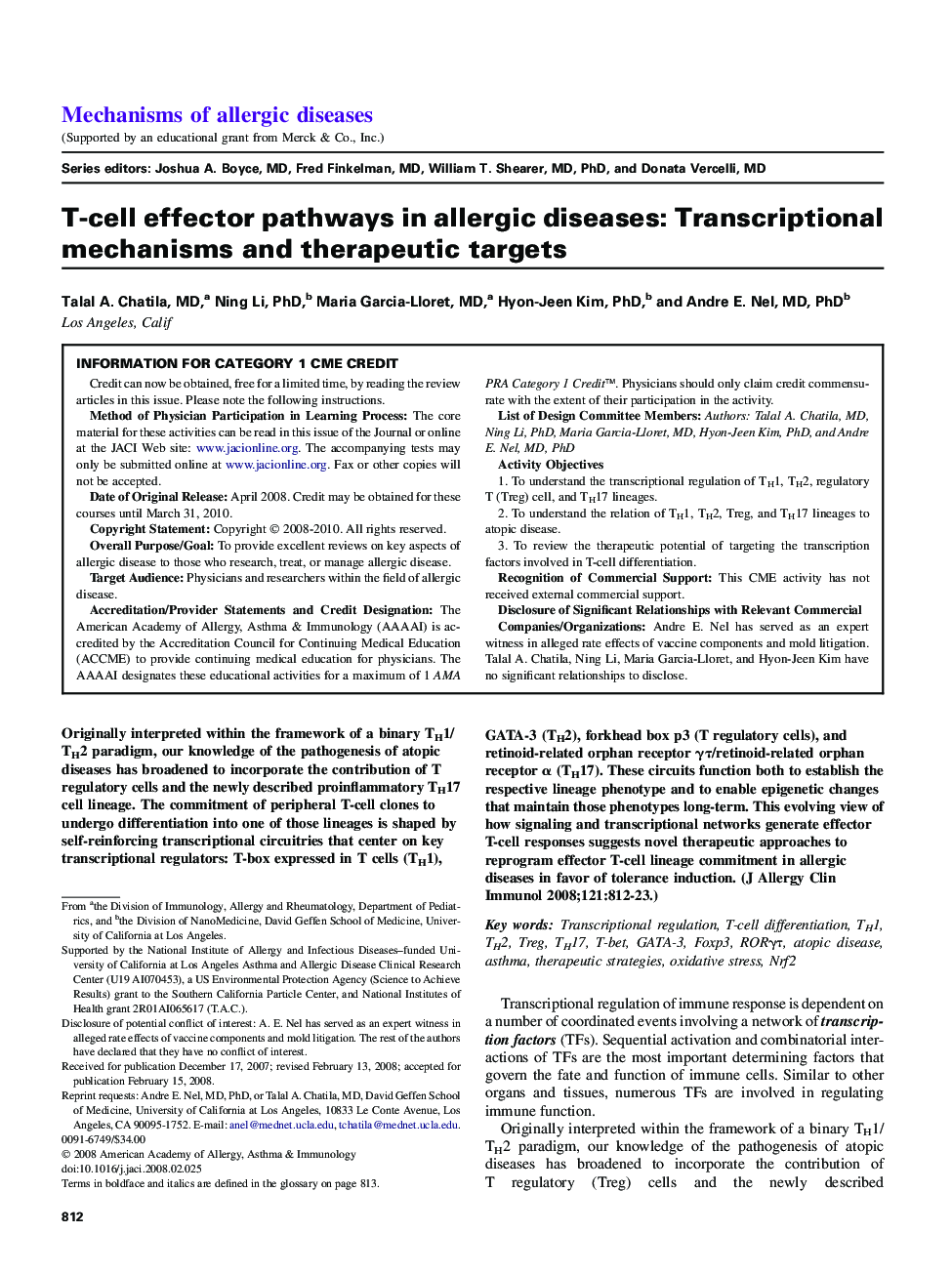| Article ID | Journal | Published Year | Pages | File Type |
|---|---|---|---|---|
| 3201448 | Journal of Allergy and Clinical Immunology | 2008 | 12 Pages |
Originally interpreted within the framework of a binary TH1/TH2 paradigm, our knowledge of the pathogenesis of atopic diseases has broadened to incorporate the contribution of T regulatory cells and the newly described proinflammatory TH17 cell lineage. The commitment of peripheral T-cell clones to undergo differentiation into one of those lineages is shaped by self-reinforcing transcriptional circuitries that center on key transcriptional regulators: T-box expressed in T cells (TH1), GATA-3 (TH2), forkhead box p3 (T regulatory cells), and retinoid-related orphan receptor γτ/retinoid-related orphan receptor α (TH17). These circuits function both to establish the respective lineage phenotype and to enable epigenetic changes that maintain those phenotypes long-term. This evolving view of how signaling and transcriptional networks generate effector T-cell responses suggests novel therapeutic approaches to reprogram effector T-cell lineage commitment in allergic diseases in favor of tolerance induction.
